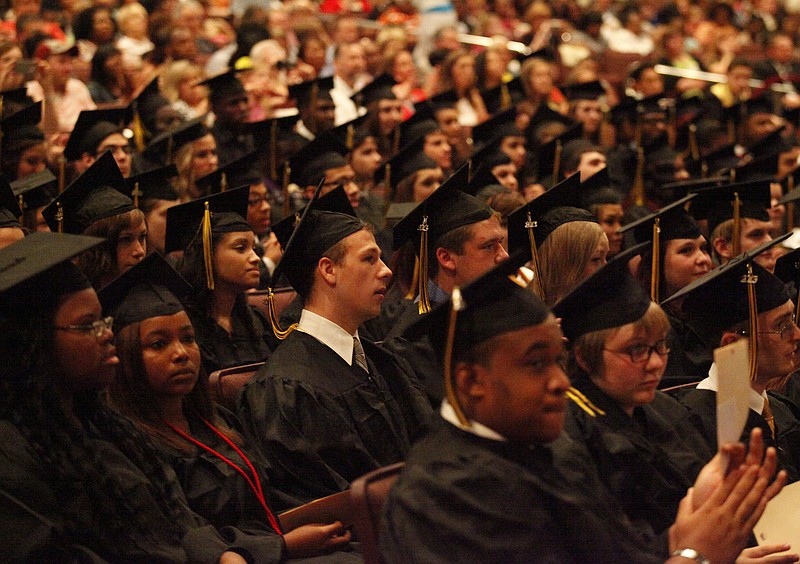For a student or a parent, nothing quite beats a high school graduation ceremony. It brings a sense of accomplishment, 12 years of classes, homework, memorization, absorption and retention for students and 12 years of providing a stable lifestyle, guidance, love and a helping hand for parents.
So it stands to reason that increasing graduation rates indicate a number of things, from students staying in school to parents ensuring their children stick it out to schools and administrators working with students and parents to see that it happens.
Hamilton County, it was recently announced, had the highest percentage of students graduate in 2018 since the way rates are calculated changed in 2011.
Indeed, the county jumped two full percentage points from 84.6 percent graduating in 2017 to 86.6 percent graduating in 2018. That's reason to celebrate, especially since the state record rate of 89.1 percent held steady from 2017 to 2018.
Among the state's four largest metropolitan areas, Hamilton County's rate was second behind that of Knox County, which had a rate of 89.8 percent in 2018.
As positive as the county's increased graduation rate is, it is only one indication of the healthiness of graduates and even could be attributed to the state's relative graduation requirements.
States, after all, do not have the same requirements for graduation.
"States measure high school graduation rates differently," according to the County Health Rankings & Roadmaps collaborative, "based on how they include transfer or new students and GED earners, and how they define the number of years allowed to receive a degree."
Georgia, for instance, only had an 81.6 percent graduation rate in 2018, suggesting its standards for completion likely were different from those in the Volunteer State.
However, TNReady scores and TVAAS growth scores from 2018 indicated that while academic progress was made in 2018, it was moderate for Hamilton County schools.
In some cases, with Opportunity Zone high schools Howard and Brainerd, for example, its TVAAS composite scores of 1 aligned with its 71.1 and 81.2 percent graduation rates, respectively, the lowest and third lowest in the district. In other cases, with Red Bank High, for example, its highest-possible TVAAS score of 5 did not align with its second lowest district graduation rate of 78.5 percent.
While states have different requirements for graduation, the Every Student Succeeds Act requires that states measure their rates consistently. Its adjusted cohort graduation rate (ACGR) is the percentage of students in the adjusted cohort, or number, of students who begin ninth grade in a particular school year and graduate within four years with a regular high school diploma. The cohort is said to be adjusted because it adds students who transfer in after ninth grade and subtracts those who transfer out, leave the country or die.
While The Howard School had the lowest graduation rate in the county, its percentage rose five points from 2017, when 66 percent of its students graduated. At the other end of the measuring stick was Chattanooga High Center for Creative Arts (CCA), where 100 percent of its students graduated for the second consecutive year.
In addition to CCA, eight other schools achieved a graduation rate of 90 percent of higher. Those schools are Hamilton County Collegiate High (98.1 percent), Chattanooga School for the Arts and Sciences (98 percent), Ivy Academy (97.1 percent, up from 84.4 percent in 2017), STEM School Chattanooga (95.3 percent), Signal Mountain Middle/High (95.1 percent), Sale Creek Middle/High (94.2 percent), Lookout Valley Middle/High (92.9 percent) and East Hamilton Middle/High (92.6 percent).
Students, parents, teachers, administrators, school boards and state education departments should celebrate improved graduation rates, but none should be fooled that these figures tell the whole picture. When comprehensive test scores meet and exceed those of the state as a whole, when it can be measured that more students graduate because they have found areas of learning that interest them (with the district's Future Ready Institutes as an example), when more graduates move on to college or some sort of work certification that helps them get a good job, then graduation rates will have even more meaning than a ceremony in which families can cheer as their young adults walk across the platform and parents can declare their job is finished.
